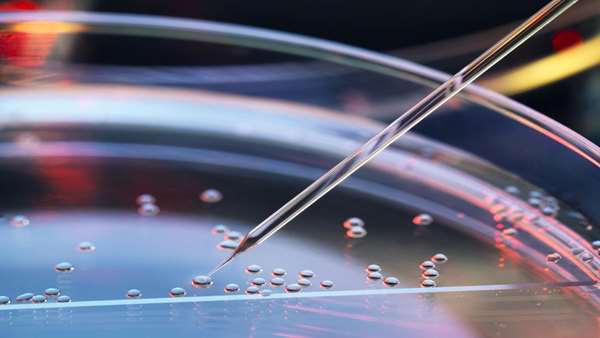Heart-specific Laminin Isoform Aids Cardiovascular Progenitor Generation for Cardiac Therapy
Researchers from the laboratory of Karl Tryggvason (Karolinska Institute, Stockholm, Sweden) have previously reported on the generation and characterization of basement membrane laminin isoforms that can promote stem cell differentiation in vitro [1-3].
Researchers from the laboratory of Karl Tryggvason (Karolinska Institute, Stockholm, Sweden) have previously reported on the generation and characterization of basement membrane laminin isoforms that can promote stem cell differentiation in vitro [1-3]. In their new Cell Reports article, Yap et al. aimed to discover if specific laminin isoforms could foster the generation of cardiovascular progenitors from human pluripotent stem cells (hPSCs) as part of a reproducible, defined, and xeno-free differentiation protocol [4]. The hope is that cardiovascular progenitors generated by the means can be transplanted into the injured human heart where they will mature into cardiomyocytes and contribute towards cardiac regeneration. Unfortunately, current strategies that employ the transplantation of hPSC-derived cardiomyocytes themselves have faced the appearance of arrhythmias that compromise heart function [5, 6].
Initial analyses of laminin expression data derived from the human left heart ventricle of non-diseased human donors [7] identified LN-221 as the most abundantly expressed basement membrane laminin in the human heart. Fascinatingly, human embryonic stem cells cultured on a substrate containing LN-221 displayed an increased propensity to differentiate towards the cardiomyocyte lineage alongside a reduction in the expression of genes that promote teratoma/tumor formation. With this knowledge in mind, the authors next developed a fully chemically defined and xeno-free LN-221-based hPSC differentiation protocol for cardiomyocytes and employed both bulk and single-cell RNA sequencing to prove the highly reproducible nature of the protocol.
The subsequent transcriptional analyses permitted the authors to identify a time point related to cardiovascular progenitor emergence, allowing the identification of three main progenitor subpopulations. Encouragingly, following injection into an acutely infarcted region of mouse heart, isolated cardiovascular progenitors proliferated and matured to form striated human cardiac muscle fibrils that survived in the heart long term, stimulated endogenous endothelial proliferation to prompt neovascularization in the infarcted region, restored contractile function to the myocardium, and attenuated the deformation of the left ventricle. Importantly, the study failed to report tumorigenicity of the cardiovascular progenitors based on whole-body imaging and histological analyses.
The authors propose that this newly described method, the transplantation of cardiovascular progenitors derived from hPSCs cultured on an LN-221-based growth substrate, may represent a clinically applicable therapeutic strategy to heart injury. However, while cardiovascular progenitors appear to be the optimal cell types for cardiac regeneration, future work from the team aims to delineate the relevance of the three different progenitor subtypes and whether one or more may represent a better means to grow new heart muscle in vivo.
Reference:https://www.cell.com/cell-reports/fulltext/S2211-1247(19)30269-4





ارسال به دوستان